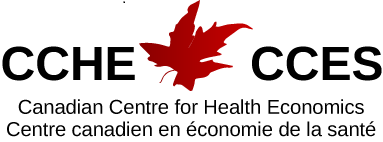
“Physician Payment Contracts In The Presence Of Moral Hazard And Adverse Selection: Theory And Application To Ontario”
As part of the Canadian Centre for Health Economics (CCHE) Friday Health Economics Series, we welcome Jasmin Kantarevic this Friday January 23rd, 10am – 12pm in HS100 (Health Sciences Building 155 College Street). Jasmin will explore “Physician Payment Contracts In The Presence Of Moral Hazard And Adverse Selection: Theory And Application To Ontario”
Jasmin Kantarevic is a Senior Director, Economics with the Ontario Medical Association (OMA), a Research Fellow with the Institute for Labour Studies (IZA), a Sessional Lecturer II with the University of Toronto, and an Associate of the Canadian Centre for Health Economics. In his role at the OMA, Jasmin provides economic research, analytical support, and evaluation for the purpose of negotiation and implementation of the Physician Services Agreements with the Ontario’s Ministry of Health and Long-Term Care. He has a thorough understanding of the physician payment contracts in Ontario and extensive experience with databases related to the healthcare system in Ontario, such as the Ontario Health Insurance Plan (OHIP), Discharge Abstract Database (DAD), National Ambulatory Care Reporting System (NACRS), and Ontario Drug Benefit (ODB). As a health economist, Jasmin has a particular interest in the impact of financial and non-financial incentives on behaviour of health care providers as it relates to access, quality, and cost of health care, and has co-authored a number of articles with Boris Kralj and others that were published in journals such as Canadian Journal of Economics, Health Economics, Health Policy, and Journal of Health Economics. Jasmin received his Ph.D. in Economics from the University of Toronto in 2005.
We develop a simple principal–agent model with moral hazard and adverse selection to provide a unified framework for understanding some of the most salient features of the recent physician payment reform in Ontario and its impact on physician behaviour. These features include: (1) physicians can choose a payment contract from a menu that includes an enhanced fee-for-service contract and a blended capitation contract; (2) the capitation rate is higher and the cost-reimbursement rate is lower in the blended capitation contract; (3) physicians sort selectively into the contracts based on their initial productivity; (4) all else equal, physicians in the blended capitation model provide fewer services than physicians in the enhanced fee-for-service model.
Link to Paper: http://
Link to schedule of CCHE talks: http://
|
To be added to the CCHE Health Economics seminar series mailing list please send an e-mail to: cche@utoronto.ca |
Related Events

Sign up for IHPME Connect.
Keep up to date with IHPME’s News & Research, Events & Program, Recognition, e-newsletter.
Subscribe to Connect Newsletter
Get in Contact
Communications
Marielle Boutin
Email Address: ihpme.communications@utoronto.ca


